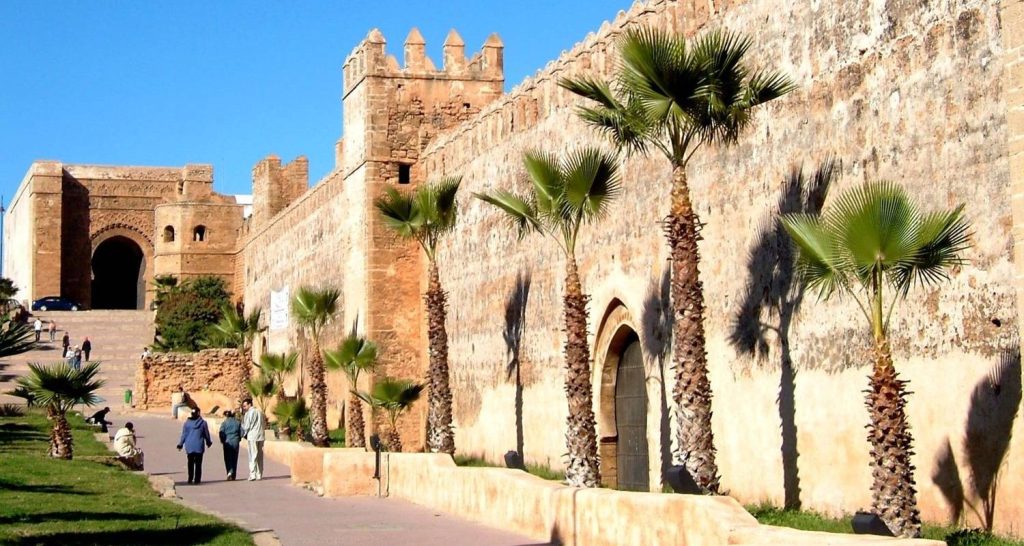Facing onto the Mediterranean, Rabat is an attractive city of dome and minarets, sweeping terraces, wide avenues and green spaces. It is markedly more pleasant than some other Moroccan cities and also undergoing fundamental change. Facing Sale, its ancient rival, across Wadi Bou Regreg, Rabat is the political, administrative and financial capital of Morocco, the country’s main university town and its second-largest metropolis after Casablanca.
The twin cities of Rabat and Sale, on opposite banks of the Bou Regreg estuary, have a long history. Rabat, the city on the southern bank had known greater extremes of fortune, while its northern twin has had a steadier but less glamorous history. Half and hour’s walk from the city centre, sale is now really a suburb of Rabat, but retains its own traditional identity.
The 12th century city walls still dominate 20th century Rabat. The more intimate achievements of the Merenids dynasty can be found in the 13th century medina of Sale and in Rabat’s royal necropolis-the walled garder of the Chella. The Rabat Kasbah, in its strategic position above the estuary, has been at the heart of the city’s long Islamic history. It has a celebrated Almohad gate, and Andalusian urban interior and a garden palace from the 17th century now transformed into delightful museum. For rarer insights into the Phoenicians and classical achievements there are the archaeology museum and the ruins of Sala colonia inside the Chella walls, to reward you with hunting views and art of the highest order.
Like other cities of the Moroccan coast Rabat was first Phoenicians, then roman. It was the southernmost urban centre of the roman province. And, as Sala colonia, given the privileges of a colonia or self-governing city by Trajan. Though roman rule was withdrawn in the 3rd century it remained a trading centre, identifying with the Muslim kharijite heresy in the mid-8th century. Protected by the powerful Berber Berghouata confederacy it survived until the 10th century, when a garrison of orthodox Arabs established a Rabat, a religious community of warriors, on the site of the present Kasbah. The Almoravids took up the struggle against the heretic berghouata and lost their first two leaders to it, but their deaths were avenged by Youssef Ben Tachafin, celebrated founder of the Almoravid Empire.
The ‘Royal City’ Known nowadays as the ‘Washington’ of North Africa, because of its parks, boulevards, monuments, embassies and government buildings, Rabat is also the seat of the Royal Family. Not surprisingly, therefore, it is home to a great many bewitching palaces, mosques and parks-all in the sensual North African style that evokes visions of a thousand and one nights.

